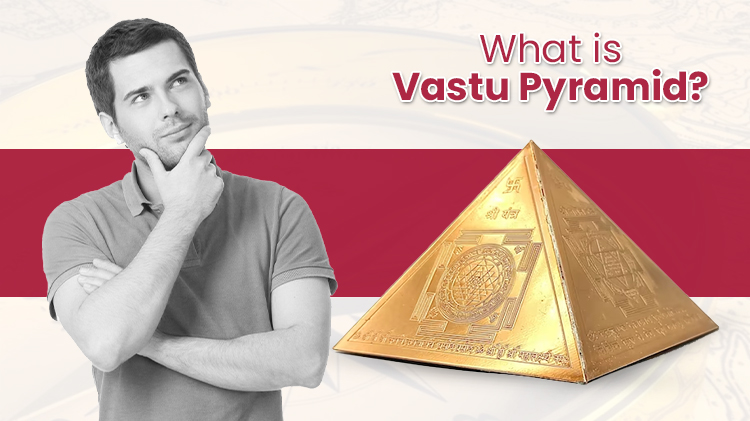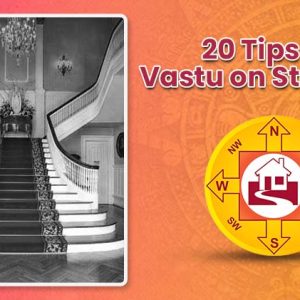Table of Contents
Vastu Shastra is an old Hindu philosophy of architecture and design that strives to foster harmony, prosperity, and happiness in residences and buildings. The Vastu pyramid is a structure based on these ideas. By harmonising the five elements of nature—earth, water, air, fire, and space—the vastu pyramid is thought to bring beneficial energy and balance the environment. It is said to have a strong impact on the energy in the area and can aid in removing any unfavorable impacts in a structure or room.
Vastu pyramids are available in a variety of sizes and materials, including copper, brass, and crystal. To encourage a positive energy flow, some people position them in certain locations within their homes, such as by the front door or in the middle of the room. Others employ them in their spiritual or meditation pursuits.
What is Vastu Pyramid?
Vastu Shastra is an antiquated Hindu theory of architecture and design, and the Vastu Pyramid is a building based on its ideas. The five elements of nature (earth, water, air, fire, and space) are thought to be balanced by the Vastu Pyramid, which is also thought to encourage positive energy flow.
How to place Vastu Pyramids
Placing Vastu pyramid entails deciding on a suitable place and positioning the pyramid in a particular way to maximize its beneficial effects on a space’s energy. Here are some general instructions for setting up a Vastu pyramid:
- Select a location: It is advised to put the Vastu Pyramid somewhere that will allow for plenty of natural light and easy visibility. Some individuals decide to put it in the middle of the room, next to the doorway to the room or building, or on a shelf where it will be seen to everyone.
- Clean the space: It’s important to clean the area where the Vastu Pyramid will be placed before placing it. This encourages the flow of positive energy and helps to eliminate any bad energy.
- Face the pyramid in its direction: According to Vastu Shastra, various directions are linked to various elements and energies. It is advised to turn the Vastu Pyramid so that the desired result is facing that direction, such as north for prosperity, east for health, and south for renown.
- Placing the pyramid on a solid surface is important since it will prevent it from toppling over or moving about. Additionally, it is advised to put a cloth or mat under the pyramid to shield the surface from damage.
Different types of Vastu pyramids
Based on the principles of Vastu Shastra, many types of Vastu pyramids are used for various reasons. There are several popular varieties of Vastu pyramids, including:
- Vastu pyramids are frequently made of copper because it is said to be a good conductor of positive energy. Pyramids made of copper are claimed to be particularly effective at dispelling bad energy and encouraging wealth.
- Pyramid made of Brass: Another common material for Vastu pyramids is brass. It is claimed to provide a relaxing effect and aid in the harmony of nature’s five elements.
- Crystal Pyramid: It’s said that crystal pyramids have a significant effect on the energy of a space or structure. They are thought to help dispel bad energy and encourage happiness and peace.
- Shree Yantra Pyramid: The Shree Yantra is a Hindu representation of abundance and success. It is said that a Vastu pyramid in the shape of a Shree Yantra will bring wealth and luck.
- Merkaba Pyramid: The Merkaba is a representation of harmony and balance; a Vastu pyramid with this shape is thought to produce good energy and foster spiritual development.
- Hindus see the Sri Chakra as a symbol of manifestation and creation. It is believed that a Vastu pyramid in the shape of a Sri Chakra can encourage abundance and assist in making wishes come true.
Where the Vastu Pyramid Should Be Placed?
A Vastu pyramid’s placement is determined by its intended use and adheres to certain Vastu Shastra principles. Here are some placement generalisations:
- Living room: A Vastu pyramid can be positioned in the living room to encourage good vibes and foster a serene and tranquil environment. It is advised to put it where it can be seen readily, such as in the middle of the room or on a shelf.
- Bedroom: To encourage good vibes and improve the quality of your sleep, place a Vastu pyramid there. It is advised to put it next to the bed on a shelf or nightstand.
- A Vastu pyramid can be positioned in an office or workspace to encourage productivity, creativity, and good energy flow. It is advised to put it where it can be seen readily, such as in the middle of the room, on a desk, or on a shelf.
- Kitchen: To encourage good energy flow and improve the quality of the food, a Vastu pyramid can be positioned in the kitchen. It is advised to put it on a shelf or close to the stove so that it can be seen.
- Bathroom: To encourage good vibes and improve hygiene, a Vastu pyramid can be positioned in the bathroom. It is advised to put it somewhere where it would be visible, like next to the sink or on a shelf.
Tips for placing Vastu Pyramids
Here are some placement suggestions if you want to use a Vastu pyramid in your house or workplace:
- Put the pyramid in a visible spot: It is advised to put the Vastu Pyramid in a spot that will be clearly seen and receive a lot of light. Some individuals decide to put the pyramid somewhere where it can be clearly seen, like right by the front door, in the middle of a room, or on a shelf.
- Pick the right material: It is thought that various materials have various qualities and affect energy in various ways. For instance, crystal is said to absorb negative energy whereas copper is thought to conduct positive energy.
- Choose the appropriate size: The Vastu Pyramid’s size might affect how effective it is. For personal use, smaller pyramids are advised; larger pyramids may be more suitable for larger settings, such as offices or public structures.
- Regularly cleaning and recharging the pyramid can help to retain its positive energy and increase its effectiveness. You can revitalize it by exposing it to moonlight or sunshine, holding it in your hands while focusing your purpose on it, or cleaning it with a soft cloth.
- Combining the pyramid with other Vastu techniques will increase its good effects and foster a peaceful and balanced environment. Examples of these techniques include colour therapy, feng shui, and aromatherapy.
Conclusion
In conclusion, Vastu Pyramids are used in accordance with the tenets of Vastu Shastra, an antiquated Indian philosophy of architecture and design that attempts to produce harmonious living environments and positive energy. Even though the effectiveness of Vastu pyramids is not fully supported by science, many people have faith in their ability to encourage good energy flow and improve a space’s overall energy.
When setting up a Vastu pyramid, it’s crucial to pick an appropriate spot, face the pyramid in a particular direction, place it on a solid surface, and concentrate your intention on the intended result. A Vastu pyramid’s exact placement is determined by its intended use and by ..
Also Read : “What Should we Avoid According to Vastu”
FAQs
1. What is the purpose of a Vastu Pyramid?
Vastu Pyramids are used to promote positive energy flow and harmonize the energy of a space according to the principles of Vastu Shastra, an ancient Indian system of architecture and design.
2. How do Vastu Pyramids work?
Vastu Pyramids are thought to work by focusing and directing the energy of a space. Some people believe that the pyramid shape is a symbol of stability, harmony and balance, and that placing a Vastu Pyramid in a specific location can enhance the energy of that space.
3. Where should I place a Vastu Pyramid?
The specific placement of a Vastu Pyramid depends on the intended purpose and the principles of Vastu Shastra. Some common locations for Vastu Pyramids include near the front door, in the living room, in the bedroom and near electrical equipment.
4. What size should my Vastu Pyramid be?
The size of a Vastu Pyramid depends on the intended purpose and the size of the space in which it will be placed. Some people prefer larger pyramids for larger spaces, while others prefer smaller pyramids for smaller spaces.
5. What material should your Vastu Pyramid be made of?
Vastu Pyramids can be made from a variety of materials, including metal, stone, crystal, wood and plastic. Some people believe that certain materials, such as copper or crystal, are more effective for promoting positive energy flow.
6. Do I need to face the Vastu Pyramid in a specific direction?
Yes, the direction in which a Vastu Pyramid is facing is important according to the principles of Vastu Shastra. The specific direction depends on the intended purpose and the principles of Vastu Shastra.
7. Can Vastu Pyramids be used for commercial spaces as well as homes?
Yes, Vastu Pyramids can be used for both commercial spaces and homes. Some people believe that using a Vastu Pyramid in a commercial space can enhance productivity and improve the overall energy of the space.




